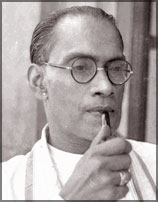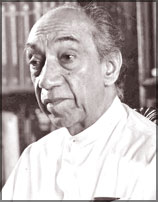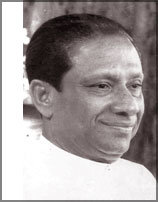Learning Pluralism from the West
 There were a few NGOs funded by the National Christian Council such
as the ‘National Peace Council’ that have been advocating pluralism
among the Sri Lankans and they opine that the cause of the so-called
‘ethnic conflict’ in this country was the absence of pluralism in nation
building in the post independent Sri Lanka. There were a few NGOs funded by the National Christian Council such
as the ‘National Peace Council’ that have been advocating pluralism
among the Sri Lankans and they opine that the cause of the so-called
‘ethnic conflict’ in this country was the absence of pluralism in nation
building in the post independent Sri Lanka.
Particularly the NPC Director Jehan Perera, who is an omnipresent
character in local and international media, often suggests that the
‘Sinhalese majority’ is not accommodative enough of the ‘minorities’ and
propound ways and means of educating the Sinhalese on that count.
History distorted
Writers like Jehan Perera have been in the forefront of the
propaganda war that justified mayhem and murder of the LTTE for decades.
With their influence over the English media these writers built up
myths, distorting historical and social realities of the situation, to
exacerbate the conflict in Sri Lanka.

SWRD Bandaranaike |

J. R. Jayewardene |

R. Premadasa |
A popular misconception held by many about the inhabitants of Ceylon
at the time of European invasion in 1505 is that the Island was
inhibited by many communities and Sinhalese among them were the
majority. The fact however was that there were no ‘majorities’ and
‘minorities’ in the current sense of the word in the ancient Sinhalay as
the island was then known to the inhabitants and to the outside world at
the time.
Sinhalese was not a name of a community then but was the term that
described all the people who inhibited the Island called Sinhalay, and
the civilization of the Island, up to that point, evolved eclectically.
During medieval times people came to the Island from many parts of
the world and mainly from India. Some were traders and explorers but
some made the island their home. Those who made the Island their home
got assimilated to the mainstream learnt the language of the Island and
accepted its religion. Accordingly the language of the Island and even
the religion evolved with time and with periodic influences, giving rise
to the unique civilization that became known as Sinhalay.
Tracing Sinhalay
The fact that the ancient name of the Island was Sinhalay was
evidenced even by Portuguese historians where they name the Island as
‘Ceylan/Ceylao’ by twisting the original name Sinhalay to suit their
phonetics.
It was however the British who formalized the name ‘Ceylon’ for
Sinhalay commencing with the letter ‘C’ and then made ‘Singhalese’ in to
a separate community starting the spelling of the community name with
the letter ‘S’.
As a result of this eclectic evolution evidently the genealogy of
many present days Sinhala leaders have been traced to their migratory
ancestors. President J. R. Jayewardene’s ancestors have been traced to a
Muslim called Thambi Mudiyanse while President Premadasa’s ancestors are
claimed to be from a particular cast in India. Even SWRD Bandaranaike is
said to descend from an Indian called Nayaka Pandaram. The fact that
these tracings may have a tinge of political expediency in them would
however not blur the eclectic character of the Sinhalese civilization.
The rulers of the island also made sure that the nation remained
homogenous but accommodative. A good example in this regard was the
grant of land by King Senarath of Kandy to Moors when they were driven
out by the Portuguese in 1623.
The King ordered the Moors to adopt Sinhala names and assimilate in
to the country’s culture. Evidently even today certain Moor members have
Sinhalese family names adorning their common Muslim names. Lorna
Devaraja, the historian and expert in Ceylon Moor history, presents a
plethora of evidence to this effect in her 1994 publication in the
Golden Jubilee Souvenir of the Moors’ Islamic Cultural Home.
Lingua inspiration
This eclectic nature permeated language culture and even religion.
Hence the Sinhala language has been enriched with words from Telungu,
Tamil and Malayalam and Buddhism in the island has been greatly
influenced by Hinduism from South India. Robert Knox who was a prisoner
in Sinhaley maintains that, ‘Sinhalese believe that there were a
pantheon of Gods’ and hence he experienced no difficulty, as a prisoner,
is pursuing his own religion, Christianity.
Quite in contrast to this pre colonial eclectic civilization, the
post-Independent Ceylon was full of social, economic, racial and
religious dichotomies.
Those dichotomies were in fact deliberately created by the colonial
administrations during their 443-year occupation to drive wedges between
groups to prevent people of the country standing united against colonial
rule.
‘Divide and rule’ was not only the principal on which the sustenance
of colonial administration rested, the divisions thus created were also
used as an excuse ‘why independence should not be granted’ to certain
colonies.
The problem with certain ex colonies like Sri Lanka therefore is that
the new nations still have not been able to overcome the dichotomies
created by colonials during their long rule.
The irony however is that after having destroyed the pluralistic and
eclectic society, the western funded NGO’s are now coming to our rescue
to tell us how minorities should be accommodated.
And their advocacy again is not in assimilating the minorities but
championing their identities and demarcating their areas of control so
that the new nation remains divided forever.
Church intereference
Let us also now examine the record of pluralism of these western NGOs
who are the present day successors to western colonial powers.
In the 16th century they invaded small and weak states with ‘Papal
Bulls’ (directives of the Catholic Church) and demolished all the
instruments of faith of those who did not believe in Christianity
calling them heathens and pagans. Just as the west lacked pluralism and
empathy for other civilizations then, even today they believe in
imposing their own standards of ‘human rights’ quite blatantly, on the
rest of the world.
[email protected]
|



